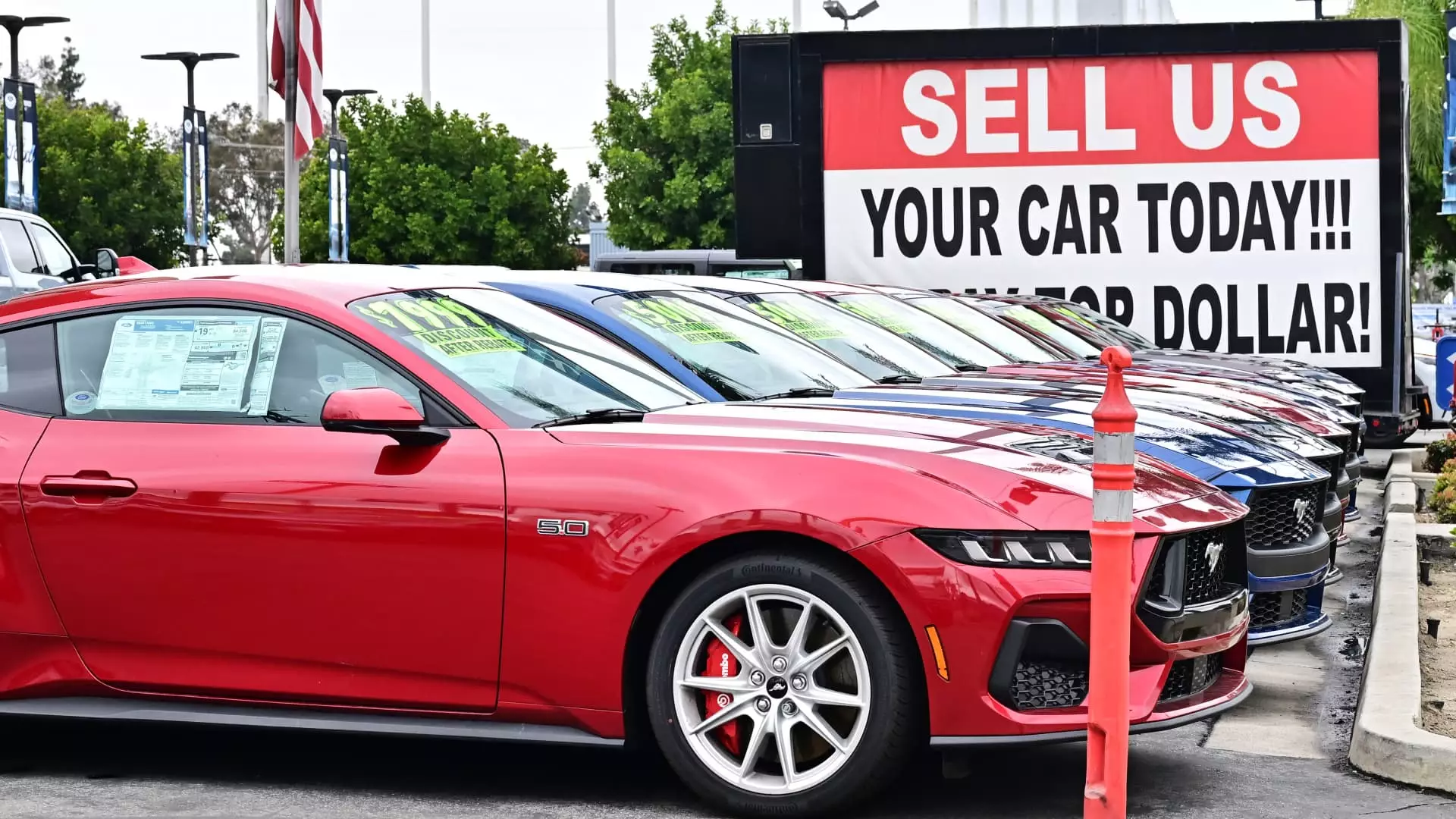The used car market has recently showcased an intriguing, albeit concerning, trend as prices witnessed a dip after peaking in April. As noted in the Manheim Used Vehicle Value Index from Cox Automotive, the index fell by 1.5% from April to May. While this seems like a small decline, it’s significant in its implications—especially when juxtaposed against the broader economic landscape shaped by pandemic strife and volatile production rates.
This momentary drop does raise notable questions about consumer behavior. To comprehend what’s at play, we must recognize that consumers who were once ambivalent about purchasing vehicles are now feeling the push to acquire them. A confluence of factors—rising prices due to impending tariffs, ongoing supply chain challenges, and a diminishing stock of available vehicles—has driven buyers to act. However, it begs the question: are we witnessing a genuine shift towards stability, or merely a temporary adjustment in a broader tumultuous market?
The Tariff Trap
The effects of President Trump’s 25% tariffs on new imported vehicles cast a long shadow over the market, indirectly influencing used vehicle sales. Although these tariffs apply directly to new cars, they echo throughout the entire automotive industry, leading consumers towards the used market due to fears of inflated prices on new models. Is it just me, or does this feel eerily reminiscent of a poorly orchestrated game of musical chairs, where consumers must act quickly lest they be caught in the consequences of fluctuating tariffs and diminishing inventory?
Consumers are not just looking for bargains; they’re seeking stability in an increasingly unstable environment. The automotive industry’s production slump—precipitated by global supply chain issues, including those exacerbated by the pandemic—has led to a situation where inventory levels are historically low. The current stock of used cars at 2.2 million units falters in comparison to the needs of an ever-demanding consumer base, laying bare the systemic pressure of demand against meager supply.
Consumer Behavior and Market Dynamics
Interestingly, retail prices for used vehicles have historically followed the ebb and flow of wholesale prices. Yet lately, they have not mirrored this trend closely, reflecting an unusual disconnect that nibbles away at consumer confidence. With a year-over-year increase of 4%, it challenges the typical behavior we expect from retail pricing, bringing further scrutiny into how economic conditions are fostering an unsettling environmental shift that prioritizes rapid gains over sustainable practices.
In reality, this trend may point to a potential stagnation where prices do not fall fast enough to reflect changes in the wholesale market. This could lead to a scenario where consumers feel trapped in a cycle of purchasing decisions that do not align with their financial realities. As they hold onto their vehicles longer—perhaps out of necessity—what we may be witnessing is not simply a market adjustment but a deeper ideological rift in how we value and perceive vehicle ownership in modern society.
The used vehicle market’s recent changes depict a complex web of economic signals, convoluted consumer choices, and the repercussions of policy decisions. We stand at a crossroads where the decisions made today will dictate the trajectories of both consumers and the automotive industry for years to come.

